Contents
Introduction and Installation
Introduction
Information flow in Amber
List of programs
Installation
Install from binary distribution
Uninstalling and cleaning
Python in Amber
Applying Updates
Building with cmake
Contacting the developers
Amber force fields
Molecular mechanics force fields
Proteins
Nucleic acids
Carbohydrates
Lipids
Solvents
Ions
Modified amino acids and nucleotides
Force fields related to semi-empirical QM
The GAL17 force field for water over platinum
Obsolete force field files
The Generalized Born/Surface Area Model
GB/SA input parameters
ALPB (Analytical Linearized Poisson-Boltzmann)
GBNSR6
GB equations available in gbnsr6
Numerical implementation of the R6 integral
Usage
PBSA
Introduction
Usage and keywords
Example inputs and demonstrations of functionalities
Visualization functions in pbsa
pbsa in sander and NAB
GPU accelerated pbsa
Reference Interaction Site Model
Introduction
Practical Considerations
Work Flow
rism1d
3D-RISM in NAB
rism3d.snglpnt
3D-RISM in sander
RISM File Formats
Empirical Valence Bond
Introduction
General usage description
Biased sampling
Quantization of nuclear degrees of freedom
Distributed Gaussian EVB
EVB input variables and interdependencies
sqm: Semi-empirical quantum chemistry
Available Hamiltonians
Dispersion and hydrogen bond correction
Usage
QM/MM calculations
Built-in semiempirical NDDO methods and SCC-DFTB
Interface for ab initio and DFT methods
Adaptive solvent QM/MM simulations
Adaptive buffered force-mixing QM/MM
SEBOMD: SemiEmpirical Born-Oppenheimer Molecular Dynamics
paramfit
Usage
The Job Control File
Multiple molecule fits
Fitting Forces
Examples
System preparation
Preparing PDB Files
Cleaning up Protein PDB Files for AMBER
Residue naming conventions
Chains, Residue Numbering, Missing Residues
pdb4amber
reduce
packmol-memgen
Building bilayer systems with AMBAT
LEaP
Introduction
Concepts
Running LEaP
Basic instructions for using LEaP to build molecules
Error Handling and Reporting
Commands
Building oligosaccharides, lipids and glycoproteins
Reading and modifying Amber parameter files
Understanding Amber parameter files
ParmEd
Antechamber and GAFF
Principal programs
A simple example for antechamber
Using the components.cif file from the PDB
Programs called by antechamber
Miscellaneous programs
New Development of Antechamber And GAFF
Metal Center Parameter Builder (MCPB)
Python Metal Site Modeling Toolbox (pyMSMT)
Setting up crystal simulations
UnitCell
PropPDB
AddToBox
ChBox
Running simulations
sander
Introduction
File usage
Example input files
Namelist Input Syntax
Overview of the information in the input file
General minimization and dynamics parameters
Potential function parameters
Varying conditions
File redirection commands
Getting debugging information
multisander (and multipmemd)
APBS as an alternate PB solver in Sander
Programmer's Corner: The sander API
pmemd
Introduction
Functionality
PMEMD-specific namelist variables
Slightly changed functionality
Parallel performance tuning and hints
GPU Accelerated PMEMD
Intel® Many Integrated Core Architecture
pmemd.gem
Atom and Residue Selections
Amber Masks
"Atom Expressions" in NAB Applications
GROUP Specification
Sampling configuration space
Self-Guided Langevin dynamics
Accelerated Molecular Dynamics
Gaussian Accelerated Molecular Dynamics
Targeted MD
Multiply-Targeted MD (MTMD)
Nudged elastic band calculations
Low-MODe (LMOD) methods
Free energies
Thermodynamic integration
Absolute Free Energies using EMIL
Linear Interaction Energies
Umbrella sampling
Replica Exchange Molecular Dynamics (REMD)
Adaptively Biased MD, Steered MD, Umbrella Sampling with REMD and String Method
Steered Molecular Dynamics (SMD) and the Jarzynski Relationship
Constant pH calculations
Background
Preparing a system for constant pH simulation
Running at constant pH
Analyzing constant pH simulations
Extending constant pH to additional titratable groups
pH Replica Exchange MD
cphstats
Constant Redox Potential calculations
Preparing a system for constant Redox Potential simulation
Running at constant Redox Potential
Analyzing constant Redox Potential simulations
Extending constant Redox Potential to additional titratable groups
Redox Potential Replica Exchange MD
cestats
Continuous constant pH molecular dynamics
Implementation notes
Usage description
Continuous constant pH MD with pH replica exchange
Obtaining parameters for a novel titratable group
NMR, X-ray, and cryo-EM/ET refinement
Distance, angle and torsional restraints
NOESY volume restraints
Chemical shift restraints
Pseudocontact shift restraints
Direct dipolar coupling restraints
Residual CSA or pseudo-CSA restraints
Preparing restraint files for Sander
Getting summaries of NMR violations
Time-averaged restraints
Multiple copies refinement using LES
Some sample input files
X-ray Crystallography Refinement using SANDER
EMAP restraints for rigid and flexible fitting into EM maps
LES
Preparing to use LES with Amber
Using the ADDLES program
More information on the ADDLES commands and options
Using the new topology/coordinate files with SANDER
Using LES with the Generalized Born solvation model
Case studies: Examples of application of LES
Quantum dynamics
Path-Integral Molecular Dynamics
Centroid Molecular Dynamics (CMD)
Ring Polymer Molecular Dynamics (RPMD)
Linearized semiclassical initial value representation
Reactive Dynamics
Isotope effects
mdgx
Input and Output
Installation
Special Algorithmic Features of mdgx
Customizable Virtual Site Support in mdgx
Implicitly Polarized Charge Development in mdgx
Restrained Electrostatic Potential Fitting in mdgx
Bonded Term Fitting in mdgx
Configuration Sampling
Thermodynamic Integration
Future Directions and Goals of the mdgx Project
Analysis of simulations
mdout_analyzer.py and ambpdb
ambpdb
cpptraj
Running Cpptraj
General Concepts
Variables and Control Structures
Data Sets and Data Files
Data File Options
Coordinates (COORDS) Data Set Commands
General Commands
Topology File Commands
Trajectory File Commands
Action Commands
Analysis Commands
Analysis Examples
pytraj
Introduction
Development
Documentation and examples
MMPBSA.py
Introduction
Preparing for an MM/PB(GB)SA calculation
Running MMPBSA.py
Python API
MM_PBSA
General instructions
Input explanations
FEW
Installation
Overview of workflow steps and minimal input
Common setup of molecular dynamics simulations
Workflow for automated MM-PBSA & MM-GBSA calculations (WAMM)
Linear interaction energy workflow (LIEW)
Thermodynamic integration workflow (TIW)
XtalAnalyze
XtalAnalyze.sh
XtalPlot.sh
md2map.sh
SAXS
Introduction and theory
Usage
NAB/sff and AmberLite
NAB and sff
A little history
A C interface to libsff
NAB overview
Fiber Diffraction Duplexes in NAB
Symmetry Functions
Symmetry server programs
libsff: Molecular mechanics and dynamics
Basic molecular mechanics routines
NetCDF read/write routines
Second derivatives and normal modes
Low-MODe (LMOD) optimization methods
The Generalized Born with Hierarchical Charge Partitioning (GB-HCP)
amberlite: Some AmberTools-Based Utilities
Introduction
Coordinates and Parameter-Topology Files
pytleap: Creating Coordinates and Parameter- Topology Files
Energy Checking Tool: ffgbsa
Energy Minimizer: minab
Molecular Dynamics "Lite": mdnab
MM(GB)(PB)/SA Analysis Tool: pymdpbsa
Examples and Test Cases
Bibliography
Index
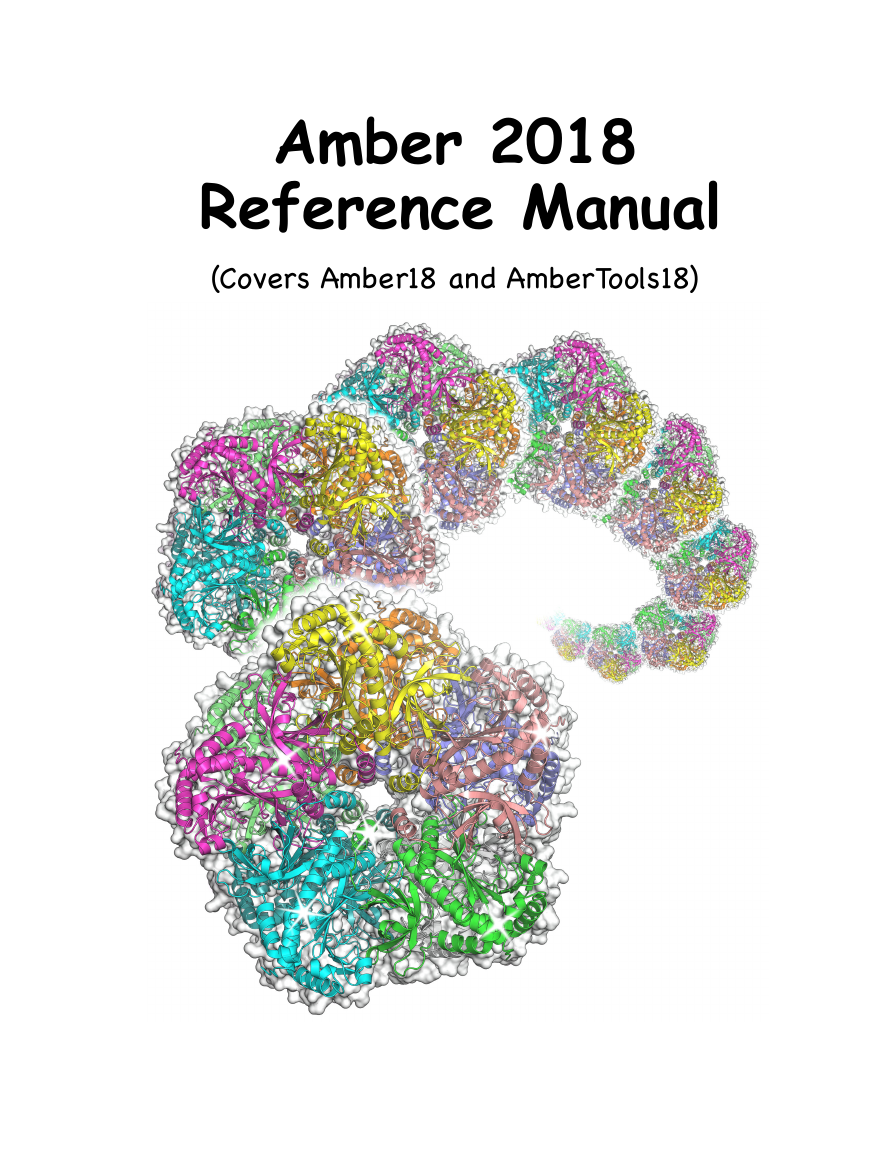

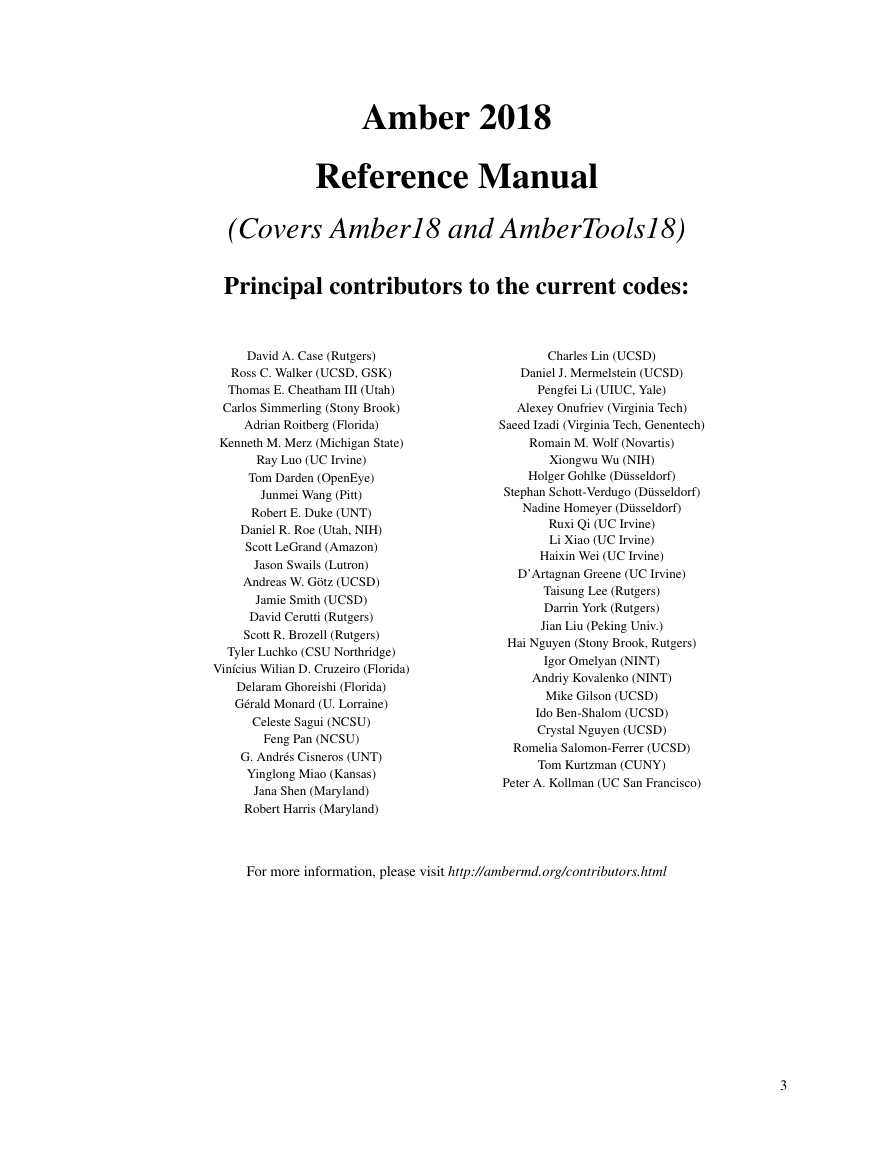
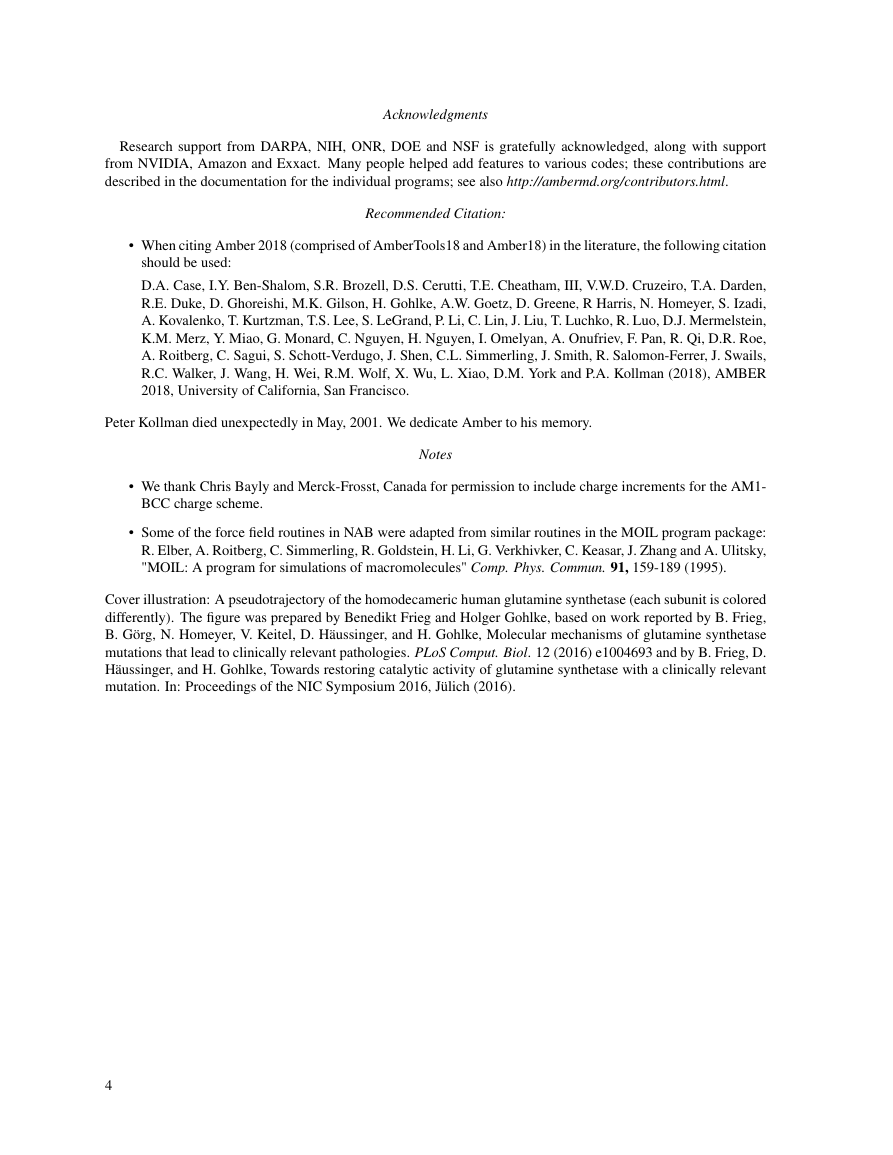
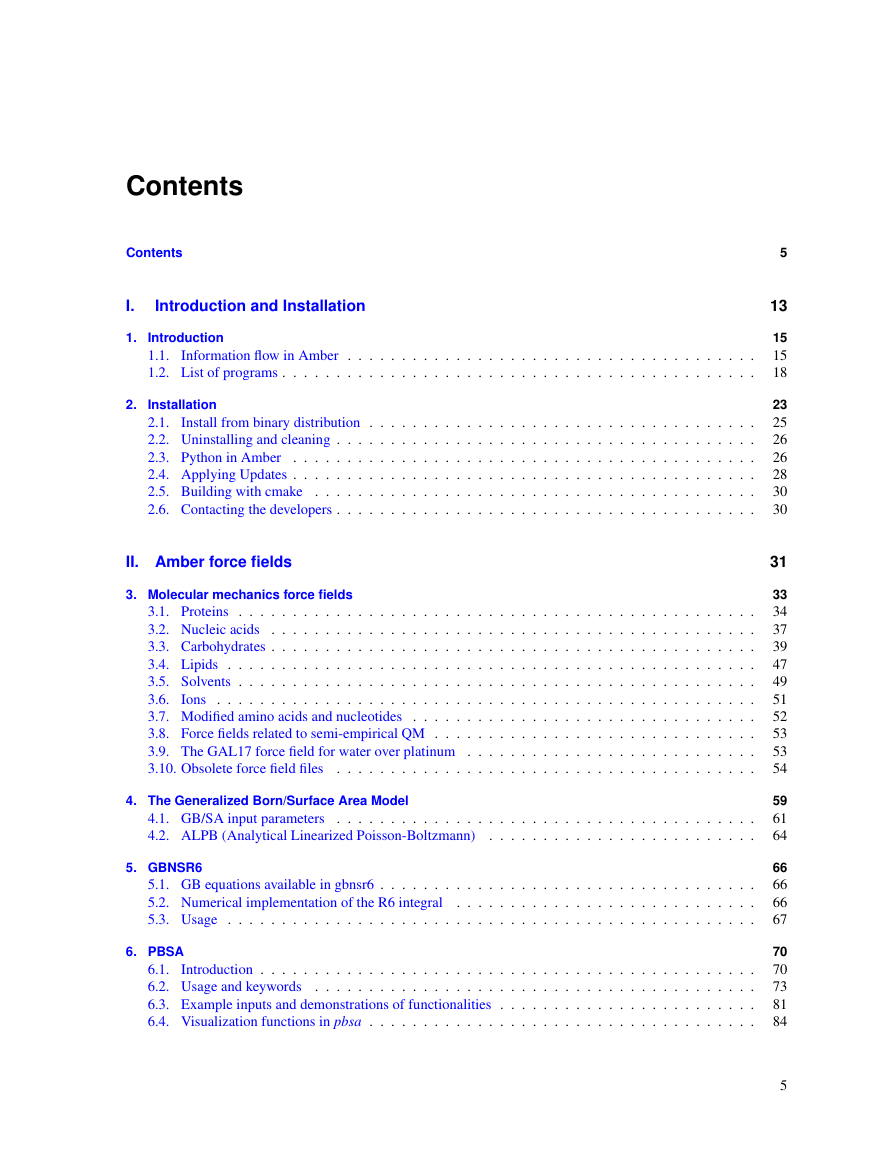
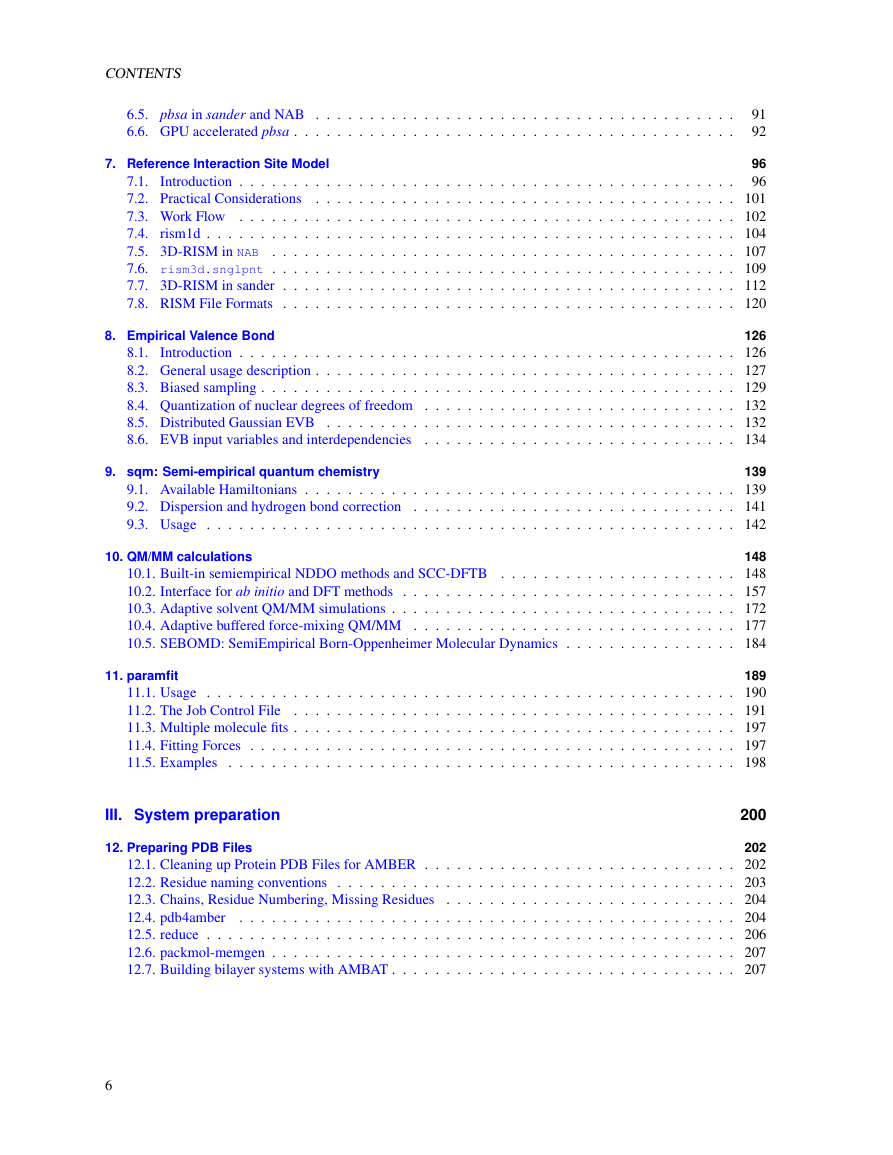

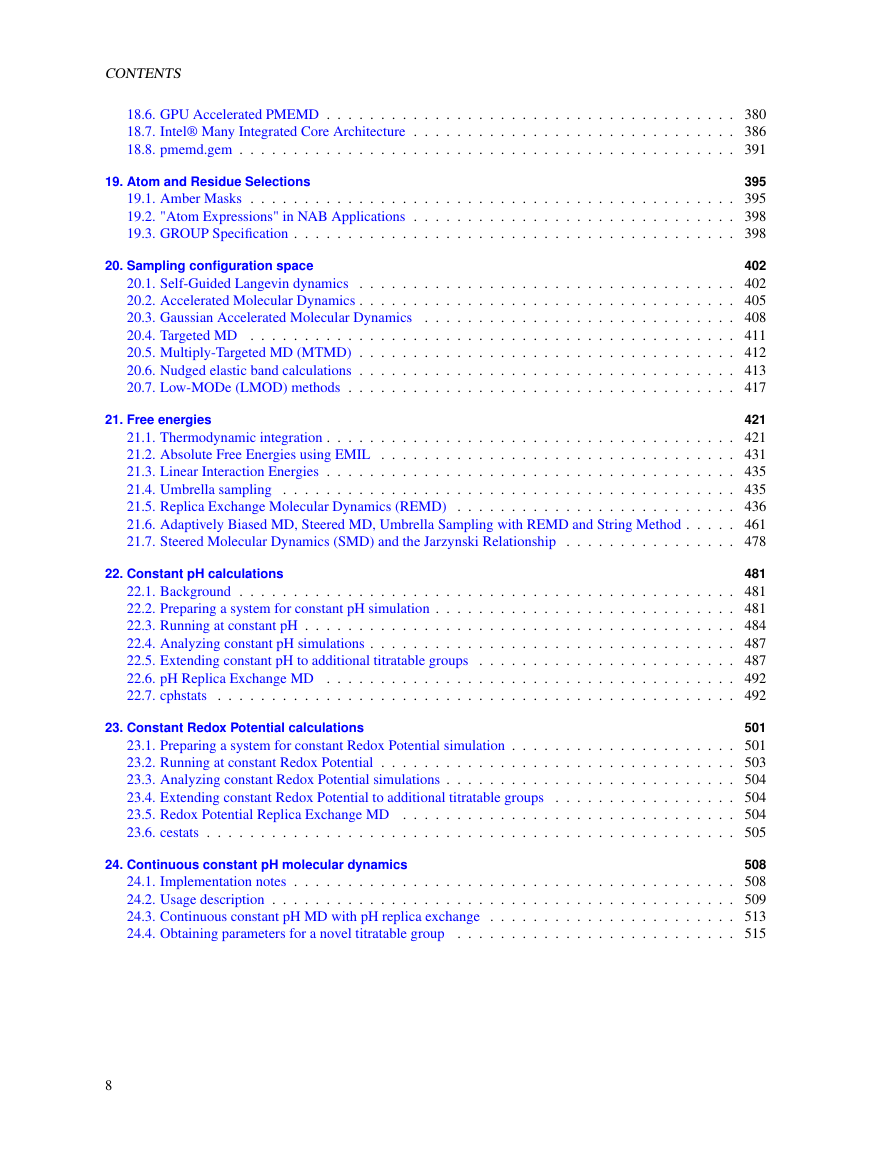








 2023年江西萍乡中考道德与法治真题及答案.doc
2023年江西萍乡中考道德与法治真题及答案.doc 2012年重庆南川中考生物真题及答案.doc
2012年重庆南川中考生物真题及答案.doc 2013年江西师范大学地理学综合及文艺理论基础考研真题.doc
2013年江西师范大学地理学综合及文艺理论基础考研真题.doc 2020年四川甘孜小升初语文真题及答案I卷.doc
2020年四川甘孜小升初语文真题及答案I卷.doc 2020年注册岩土工程师专业基础考试真题及答案.doc
2020年注册岩土工程师专业基础考试真题及答案.doc 2023-2024学年福建省厦门市九年级上学期数学月考试题及答案.doc
2023-2024学年福建省厦门市九年级上学期数学月考试题及答案.doc 2021-2022学年辽宁省沈阳市大东区九年级上学期语文期末试题及答案.doc
2021-2022学年辽宁省沈阳市大东区九年级上学期语文期末试题及答案.doc 2022-2023学年北京东城区初三第一学期物理期末试卷及答案.doc
2022-2023学年北京东城区初三第一学期物理期末试卷及答案.doc 2018上半年江西教师资格初中地理学科知识与教学能力真题及答案.doc
2018上半年江西教师资格初中地理学科知识与教学能力真题及答案.doc 2012年河北国家公务员申论考试真题及答案-省级.doc
2012年河北国家公务员申论考试真题及答案-省级.doc 2020-2021学年江苏省扬州市江都区邵樊片九年级上学期数学第一次质量检测试题及答案.doc
2020-2021学年江苏省扬州市江都区邵樊片九年级上学期数学第一次质量检测试题及答案.doc 2022下半年黑龙江教师资格证中学综合素质真题及答案.doc
2022下半年黑龙江教师资格证中学综合素质真题及答案.doc